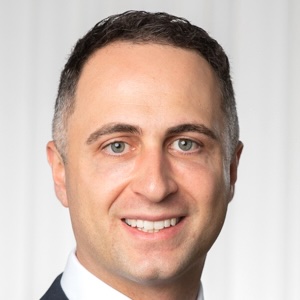MA Financial: Is there more room to run in Private Credit?

How would you characterise how the private markets have taken off over the last 18 months?

Frank Danieli: The evolution of private markets has been going on for probably two decades. What's happened is that you've seen a dynamic where the number of banks globally has shrunk significantly. As that's happened, traditional lenders have become bigger and bigger and more focused on vanilla products. A thematic has emerged where there's capital that needs to be provided to companies and real-world-economy borrowers, but the traditional providers of that finance have scaled back substantially. What private markets have done is fill the gap. This is a secular trend that has been occurring for a long time. Over the past two years, more people have simply become aware of the opportunity that exists in these private markets. Mostly it has played out in North America, Australia and Europe, but the opportunities are now coming to Asia and funds are available which make these themes more readily available to a wider range of investors.
How has it evolved in the US?

Ashees Jain: The private markets always used to be quiet, because the assets sat on bank balance sheets and banks didn't necessarily beat the drum about all the deals that they were doing. But as deals have increased in size, the assets have received a lot more attention from the overall market.
Are we in a bubble at the moment?
Frank Danieli: Private credit is a really broad term. Most lending in the economy has been private for generations but it has just sat on the balance sheet of banks. Funding private equity and leveraged buyouts makes up only around 20% of private credit. There's a whole range of other things within private debt. We spent a lot of time in the US for example, on what we call asset based finance – a $5.5 trillion market! Often that is funding portfolios of loans but beyond that, there is also private lending backed by real estate, for example. It's not that there's a bubble in the asset class. It might be that some parts of private lending are a little bit overheated, but there are other parts that are almost completely underserved. It's really about having the flexibility to pivot in and out of the right verticals at a given time.
Ashees Jain: Part of the issue is that risk spreads are very tight in public fixed income at the moment. This is true whether you are talking investment grade or high yield bonds. When that happens, investors start to look where else they could put their capital. That has brought private markets to the forefront. The pickup for similar risk in the private markets can be as much as 300 basis points wider than in the public markets.
How do you think the market is going to evolve?
Frank Danieli: There are massive secular tailwinds that are occurring within what is now a very large asset class. There are a plethora of new private credit managers and people trying to redefine themselves as having private credit capabilities because of the growth in this asset class. There is also huge investor demand because the returns available at the moment in private credit are 10-12%.
While some pockets of the market are overheated, there are also pockets that are underserved and underbanked. If you can find the right areas to lean into, that's really what's going to distinguish good performance from average and poor performance in private credit in the next 18 to 24 months.
Are there any other events outside the sector that could cause any issues?
Ashees Jain: In the US, everyone is focused on the US Federal Reserve and on the direction of interest rates. It is the driver of market sentiment and of equity and bond performance. The rate pathway impacts both your public and private investments.
The market view is that the Fed is done raising rates at the moment, but if anything were to change significantly around those views, it could be disruptive. It is not so much whether there are going to be two cuts or six cuts. If there were indications that the Fed planned to raise rates again, that would lead investors to pause on risk assets.
What kind of private credit investments are best placed in the current cycle?
Ashees Jain: Our bread and butter for the last 10 years in the US has been asset backed finance. This is different from corporate cash flow lending – we're lending against pools of receivables or pools of assets. What makes this interesting vs corporate lending is that you get both interest and principal across the life of the loan, and the security package is much easier to enforce.
Compare that with corporate cash flow lending where you have just interest and then a large bullet maturity at the end. We've seen good opportunities in asset based finance and are excited about the opportunities there.
Frank Danieli: The asset based finance market remains exciting in Australia and in Asia too. It's been driven in Australia predominantly by strict regulatory standards on banks. This means that we don't think of banks in that space as competitors but as partners. The other thing that is happening across APAC is that non-sponsor back lending – lending directly to counterparties – is an emerging theme. It's nascent, but it's growing significantly. The opportunity there is attractive because you tend to be lending to established businesses with much lower levels of leverage than when it's a sponsor-backed deal.






